The "Veiled" Face and the "Squareness" of the Carved Sphinx Face
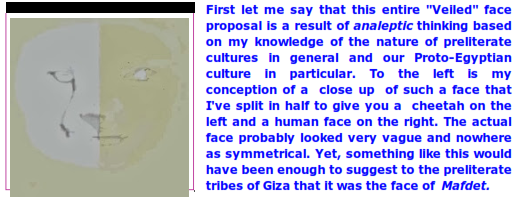
Weathered rocks have always played a role in preliterate cultures who saw such rocks as God faces. As to whether the outcropping at Giza did contain a faint split image suggesting both a human and cheetah face is, your guess is as good as mine. It may have been just a faint cheetah suggestion. Or it may have had some faint design that would be meaningless to us but not the people of Giza. We have enough examples throughout the world of weathered animal and human faces to know they exist and in large numbers. We also know they were honored as God-faces. I chose the most "complicated" image because it could have been that way, so why not propose it? After all, history, indeed science itself, is loaded with such "accidents".
Moreover, it is clear that the Giza inhabitants of 6000 B.C. would have immediately seen such a "Veiled" face as being spiritually related to both Mafdet and the female Nubian Shaman who I see arriving to live among them accompanied by two leashed cheetahs.This may seem a bit too “Hollywood” for some, but her being accompanied by cheetahs, which were native to Nubia, would not be an unusual situation. After all, we are talking about a visionary shaman/leader whose patron goddess was Mafdet, not a rich merchant like Abraham.

2) The cheetahs would be an emblem of the status of the female Nubian shaman who I see naturally associating herself with Mafdet, the Cheetah Goddess, who is a very early Mother Goddess, half female/half cheetah, whose origin is Nubian and undoubtedly with deep preliterate roots.
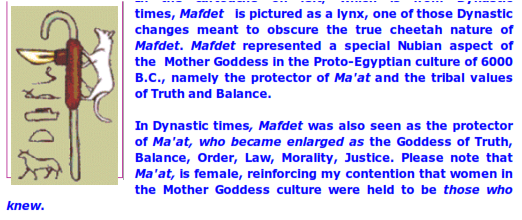
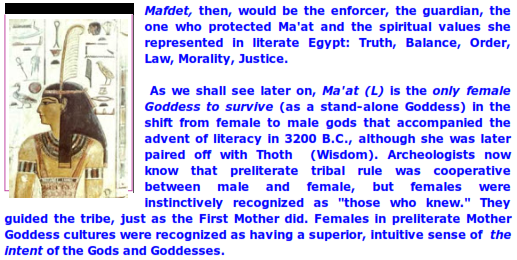
I have no doubt that the face on the Sphinx is a female Nubian. Many viewers, current and past, agree with me in that observation. As to her being a shaman, I should say that I also see her as a leader, which in a 6000 B.C. Mother Goddess culture needn't have been separate roles. Preliterate tribal cultures weren't cultures of specialization such as ours where the priest is always separate from the president.
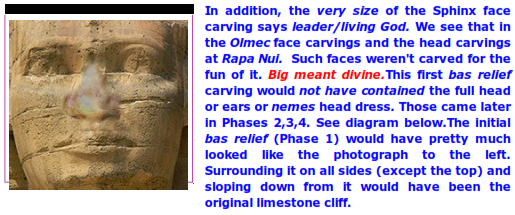
Here I've shown on the left the head at a much later stage, when the ears, nemes and other Dynastic symbols have been added. I've done this so you can look at the face as you've come to know it.
One of the things you should notice immediately if you look closely at the overlays is how square the lower half of the Sphinx's face is and how flat the top of the head is.
This is what that squareness of the Sphinx's face suggests to me as an artist:
1) the original weathered, "Veiled" face may have looked "square" and the carvers honored it. This suggestion is not to be lightly dismissed, as such a face would have been considered divine in preliterate Egypt.
or
2) The face of the 6000 B.C. female shaman was itself somewhat "square" as it is in this other photo of a modern Nubian woman. Below are some other modern Nubian women. They all have markedly "square", broad faces.
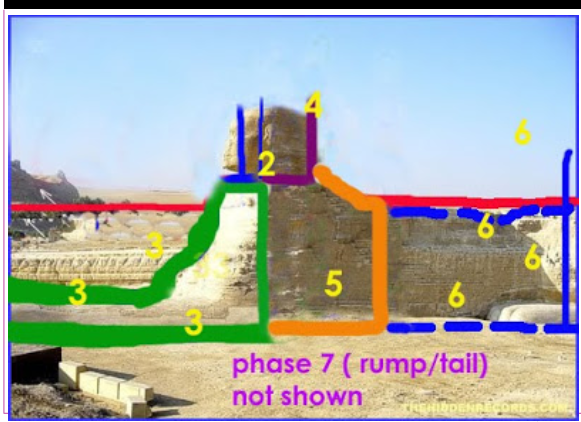
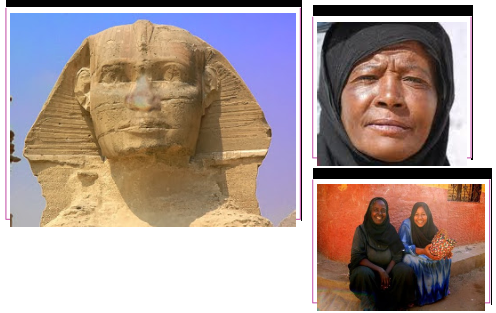
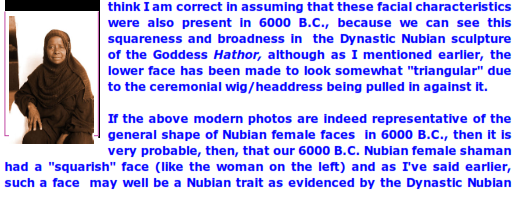
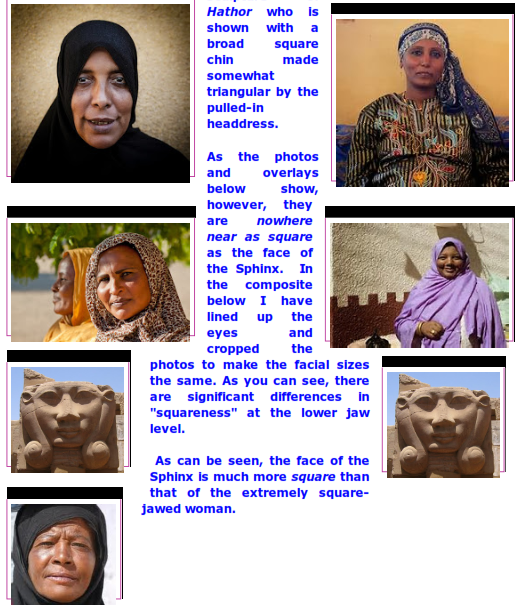

4) I'll add to that the marked possibility that the shape of the outcropping itself had a relatively flat top and an inclined front slope. The inclined front slope upon which the face would be carved would help explain the upward gaze of the face, which is something I'll go into shortly. For early preliterate carvers, such as our proposed 6000 B.C. carvers with no experience in monumental carving, following the outlines of the outcropping itself would have been labor saving to say the least.
Needless to say, in such a case, and I believe it was the case, the shape of the outcropping would also have been seen as a sacred indication and thus to be followed in the face carving.
I could take all four explanations as possible contributors to the squareness of the Sphinx face, which is an oddity anyway you look at it. If I knew of no other factors, and had to lay money on which of the four factors had the greatest impact, I'd say a combination of all four:
1.The Nubian squarish face
2.The crude preliterate carving and scaling techniques.
3. The the original weathered, "Veiled" human/ cheetah face may have looked "square".
4. The shape of the outcropping itself ( flat top, inclined front slope).
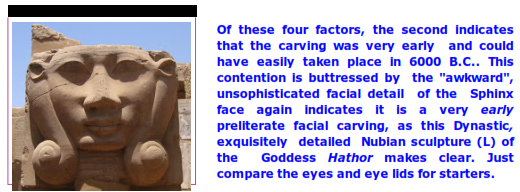
Author's Note
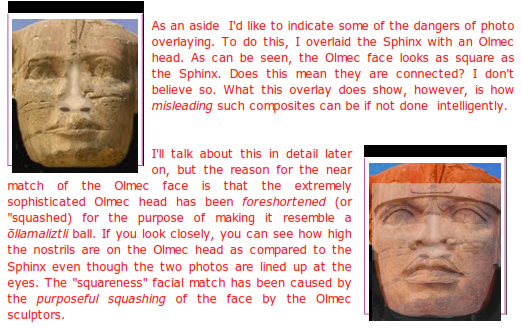
End Author's Note

The preliterate carvers may have lacked the ability to render delicate facial details but I contend they understood proportion perfectly as well as how to bend it to their purposes, something I will go into in great detail a bit later on in this blog.
















